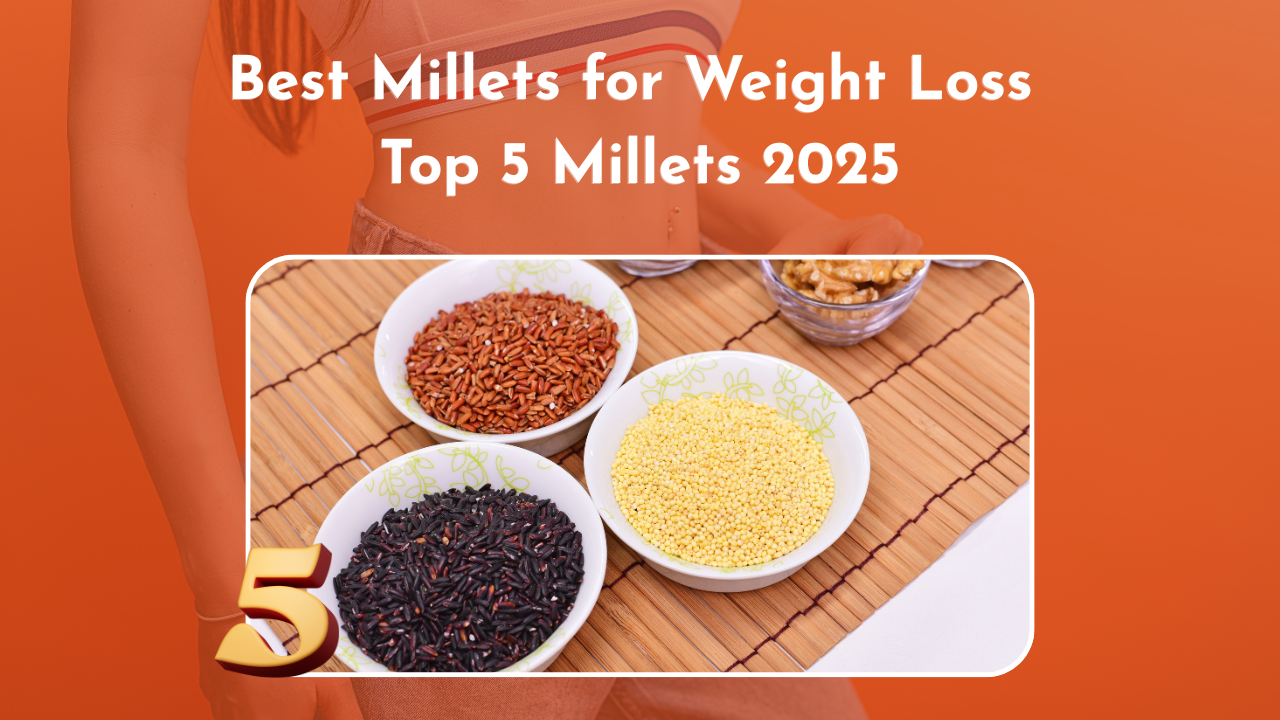In recent years, millets have gained recognition as a nutritious alternative to traditional grains. Their high fiber content, low glycemic index, and rich nutrient profile make them an excellent choice for those looking to manage their weight effectively.

This guide explores the best millets for weight loss, their health benefits, and practical ways to include them in your daily meals.
Why Millets Support Weight Loss:
Millets offer several advantages for weight management:
- High Fiber Content : Promotes satiety and reduces unnecessary snacking.
- Low Glycemic Index : Helps regulate blood sugar levels, preventing sudden hunger spikes.
- Rich in Protein : Supports muscle maintenance and metabolic function.
- Nutrient-Dense : Provides essential vitamins and minerals without excess calories.
Unlike refined grains, millets digest slowly, ensuring prolonged energy and reduced cravings.
Top 5 Millets for Effective Weight Loss:

1. Foxtail Millet :
- Foxtail millet is one of the best options for weight loss due to its low calorie count and high fiber content. It helps control blood sugar levels, making it ideal for those with diabetes or insulin resistance.
2. Finger Millet (Ragi) :
- Ragi is packed with calcium and amino acids, which aid in appetite control and metabolism. Its slow digestion keeps you full for longer periods.
3. Barnyard Millet :
- With one of the lowest glycemic indexes among millets, barnyard millet is perfect for calorie-conscious individuals. It is also rich in iron and fiber.
4. Pearl Millet (Bajra) :
- Bajra contains healthy fats and iron, providing sustained energy throughout the day. It is particularly beneficial for those with anemia.
5. Kodo Millet :
- Kodo millet is known for its high antioxidant content, which supports metabolism and fat oxidation. It is also gluten-free and easy to digest.
Also Check : Habits To Crush Your Fitness Journey
How to Include Millets in Your Diet
Replacing refined grains with millets is a simple yet effective dietary change. Here are some practical ways to incorporate them:
- Breakfast : Prepare millet porridge or upma for a fiber-rich start.
- Lunch/Dinner : Use millets instead of rice in dishes like khichdi, pulao, or salads.
- Snacks : Opt for millet-based snacks like chilla or roasted millet bars.
- Baking : Substitute wheat flour with millet flour for healthier rotis or baked goods.
Common Mistakes to Avoid :
While millets are beneficial, certain mistakes can hinder weight loss progress:
- Overconsumption : Even healthy grains should be eaten in moderation.
- Ignoring Portion Control : Balance millets with proteins and vegetables.
- Lack of Variety : Rotate different millets to ensure a broad nutrient intake.
Frequently Asked Questions:
Which millet is best for belly fat reduction?
- Foxtail and kodo millets are particularly effective due to their high fiber and low-calorie properties.
Can millets be eaten daily?
- Yes, but variety is key. Rotate between different millets to avoid nutrient imbalances.
Are millets better than quinoa or oats?
- Millets are more affordable, gluten-free, and often higher in fiber compared to quinoa and oats.
Conclusion :
Millets are a sustainable and nutritious choice for weight loss. By integrating them into your diet, you can enjoy long-term health benefits while managing your weight effectively. Start with one or two varieties and experiment with recipes to find what works best for you.